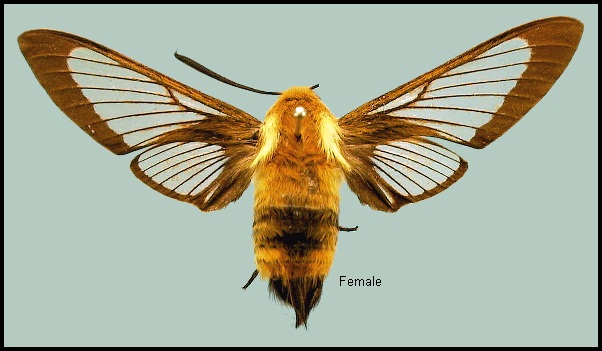
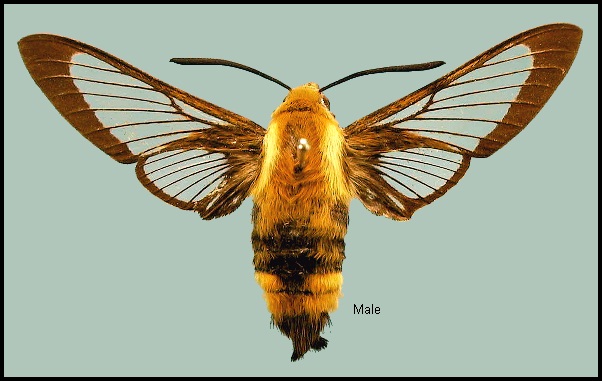
Haemorrhagia staudingeri ottonis Rothschild & Jordan, 1903, Novit. zool. 9 (suppl.): 457. Type locality: [Russia,] Amur [Russian Far East]
Synonym. Haemorrhagia staudingeri ottonis Rothschild & Jordan, 1903.
Synonym. Hemaris stueningi Eitschberger, Danner & Surholt, 1998.
Wingspan: 37--57mm. Differs from all other Hemaris species of the Russian Far East by the absence of a longitudinal scaled fold in the discal cell of forewings. Very similar to the more southern Hemaris staudingeri but distinguishable by the pale lateral stripes on the upperside of the thorax. Hindtibia yellowish grey over at least the basal half and often almost to the apex (Ian Kitching, pers. comm 2018). When cold, the wings are often raised vertically.
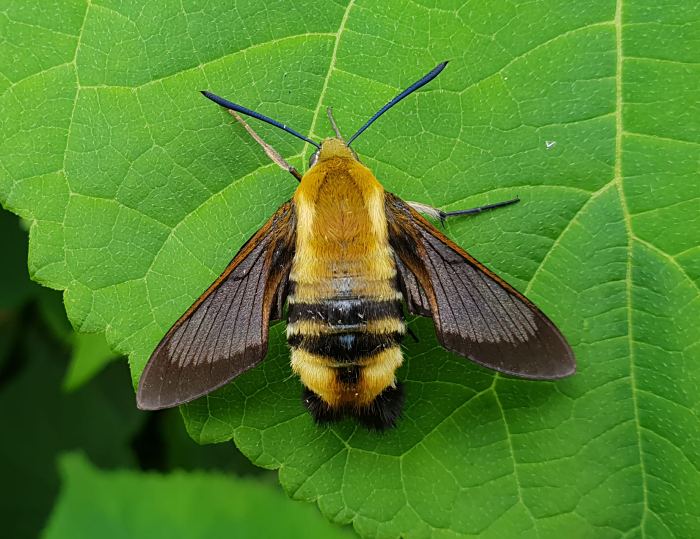
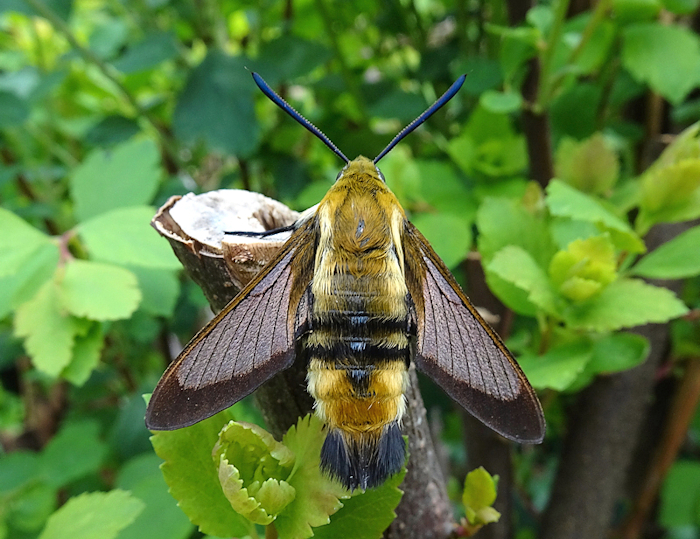
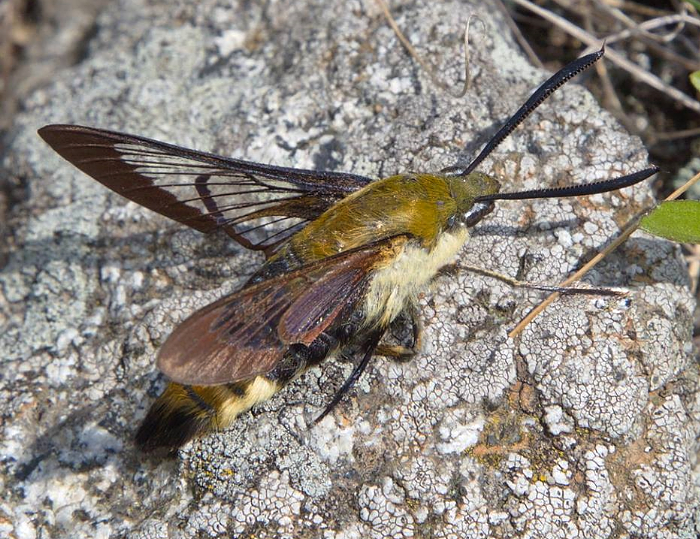
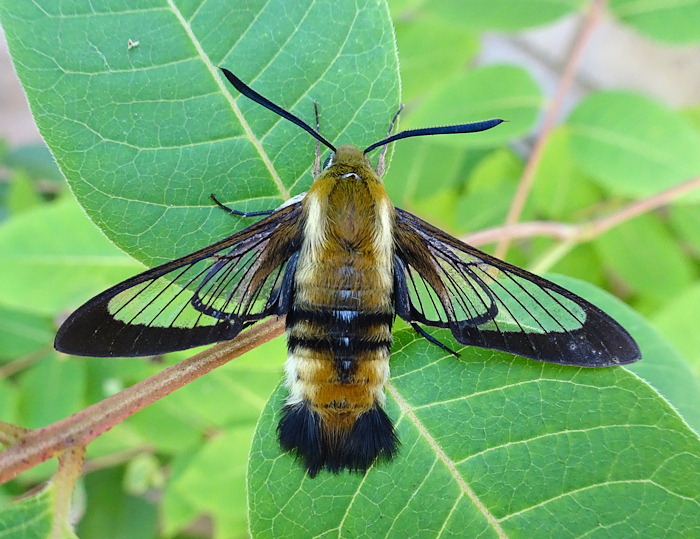
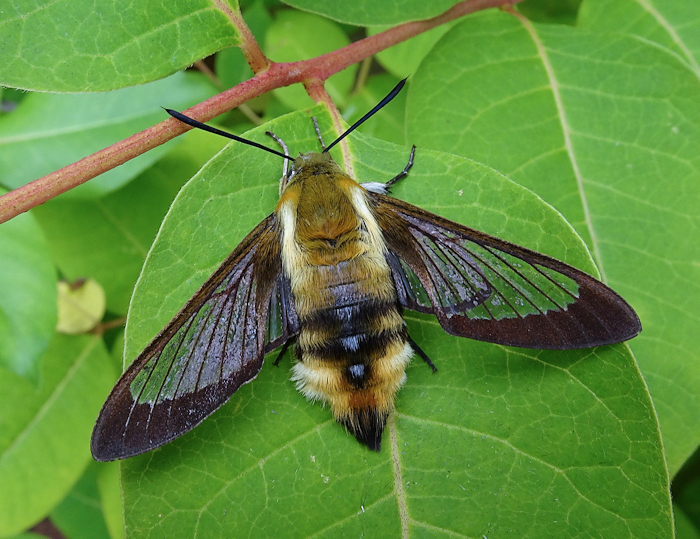
A species of deciduous woodland (Izerskiy, 1999b). In terms of behaviour, Koshkin & Yevdoshenko (2019) state that - 'In early June, adults are active mostly from 8:30 until 12:30 a.m. and then again from 14:00 until 17:00 p.m. According to our observations, at this time of the year, they prefer to visit for nectar flowers of Syringa and Lonicera that are very common and widespread in the region. In Gusevskii Rudnik, this species inhabits the same places as Hemaris affinis, but is much less numerous than the latter. As per one-hour observations near a group of flowering Syringa shrubs, we have seen usually 7-12 adults of H. affinis and only 1-2 adults of H. ottonis.' Around Beijing, Syringa oblata Lindl. is a favourite source of nectar.
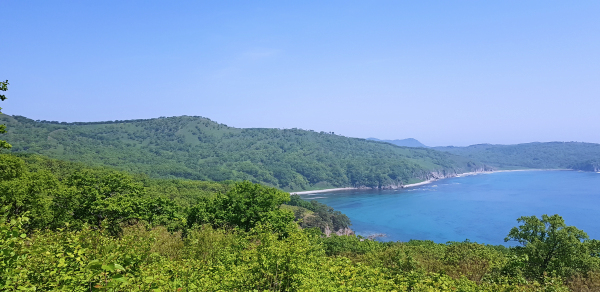
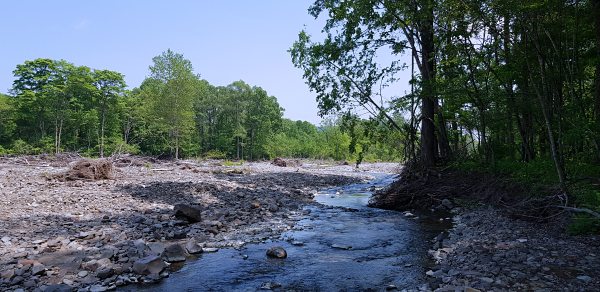
China: 25.iv (Beijing); v (Liaoning); 16-25.vi (Jilin); 30.vi (Beijing); 10.vii (Shanxi). Russia: v (Primorskiy Krai); 19.vi (Primorskiy Krai); 4-22.vii (Primorskiy Krai); 2-4.viii (Primorskiy Krai).
Park et al. (1999) give mid May until late July as the flight period in Korea.
OVUM: Pale whitish-green or pale yellow, almost spherical, 2mm x 1.8mm. Laid singly or in pairs on the underside of leaves, on flowers, or on the buds of young shoots. Females prefered to lay on small, isolated and well protected Weigela shrubs (Koshkin & Yevdoshenko, 2019).
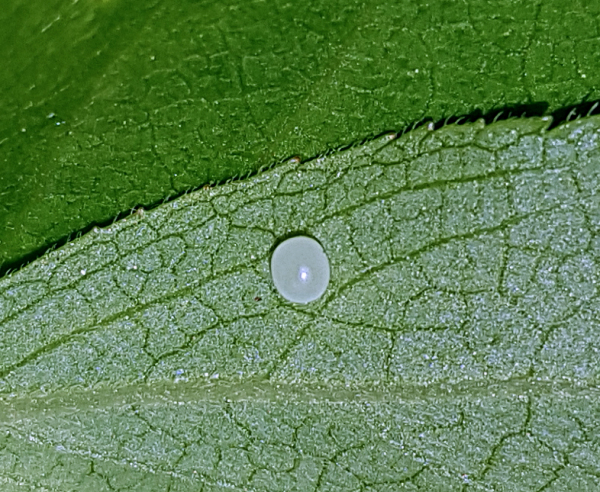
LARVA: According to Koshkin & Yevdoshenko (2019), the mature larva of H. ottonis is very distinctive: it is the only Eurasian Hemaris with a smooth integument, i.e. with almost no granules by the end of the fifth instar, and a strongly recurved caudal horn. It looks most similar to that of Cephonodes. Can be very large, up to 57 mm, which is almost twice the length of the similar H. affinis.
First instar larva 6-8 mm. Head, body, true legs, and prolegs light green. Body with a dorso-lateral whitish line extending from segment 2 to the base of the horn; sparsely covered with rather long blackish-grey bifurcated setae (but not bifurcated on segment 1). Spiracles light green. Caudal horn long, straight, black, smooth, and bluntly bifid terminally (Koshkin & Yevdoshenko, 2019).
In the second instar, length 9-12 mm. Head, body, true legs, prolegs light green. Body with a thin dorso-lateral whitish line extending from segment 2 to the base of the horn. With dark green aorta running centrad dorsally. Head and body densely covered with very short, almost invisible, whitish setae. Spiracles light green, little different from ground colour. Caudal horn long, straight, black, very slightly bifid terminally, and densely covered with very small black setae (Koshkin & Yevdoshenko, 2019).
By the third instar, 13-16 mm. Head, body, and prolegs light green. Body with a dorso-lateral whitish line extending from segment 2 to the base of the horn. With dark green aorta running centrad dorsally. Head and body densely covered with granules and very short whitish setae. Spiracles whitish, lighter than ground color. True legs slightly brown. Caudal horn long, straight, brown, lighter at the base, pointed terminally, and densely covered with small black granules and setae (Koshkin & Yevdoshenko, 2019).
Reaches 17-31 mm in length in the fourth instar. Head and body light green, very densely covered with lighter yellowish granules\spots and very short whitish setae. Body with a dorso-lateral yellowish stripe extending from segment 2 to the base of the horn. Two broad whitish lines run down the entire dorsum, with a dark green dorsal aorta between them. Spiracles orange, each with a small white dot at the dorsal and ventral end. True legs light brown. Prolegs light green with slight brown tint. Ventral surface of the body light green with light brown parts. Caudal horn long, slightly curved, light brown, lightening from the top to base, pointed at the tip, and densely covered with small black granules and setae (Koshkin & Yevdoshenko, 2019).
In the fifth instar 32-57 mm when at rest. Width of head capsule 5mm x 6.2mm. Ground colour light green. Integument smooth, with a large number of small, rounded, yellow granules\spots in 7-8 irregular, transverse rows on each segment. As the larva grows, these granules become dull, and sink down to the same level as the integument. The are no body setae. Two whitish lines run along the entire dorsal side, with a dark green dorsal aorta between them. With a thin, yellow dorso-lateral line, beginning at the anterior edge of the mesothorax and running uninterrupted to the base of the caudal horn. Spiracles orange, each with a small white dot at the dorsal and ventral end. Head green, darker than ground colour of the body, covered with small, paler granules. Caudal part of the head dark brown, almost black. Ventral surface of the body dark brown. True legs and prolegs light brown, darkening toward the base. Caudal horn short relative to the body length, strongly recurved, light pink, and covered with black conical granules. Apical part of the horn black-brown (Koshkin & Yevdoshenko, 2019).
For 4-6 days before pupation the larva stops feeding and darkens, becoming brown with a purple tinge. The sides of the body are light brown with pink\slight green tint. The dorsal side is dark brown with a purple tinge; transverse rows of rounded light pink and light green granules\spots on a dark background form a fine-meshed pattern; the aorta is dark brown, darker than the ground colour. The head is purple-brown, and the caudal horn blue-violet. Pupation takes place on the ground in a loosely spun silken cocoon interwoven with debris. The development of the pupae, produced by first generation moths, lasts from 8 to 14 days, depending on the ambient temperature. The pupae produced by second generation moths overwinter (Koshkin & Yevdoshenko, 2019).
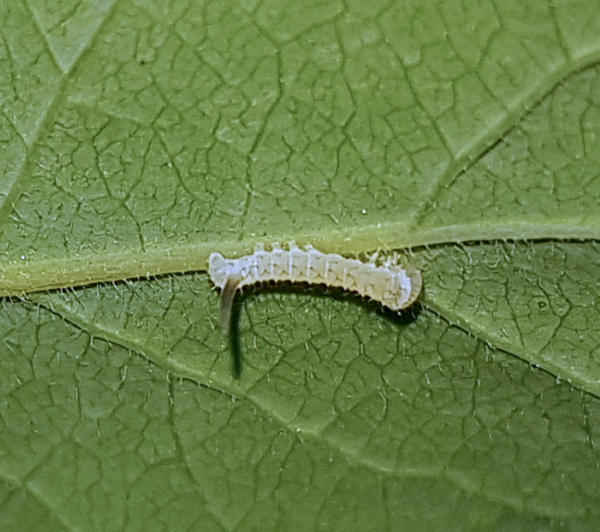
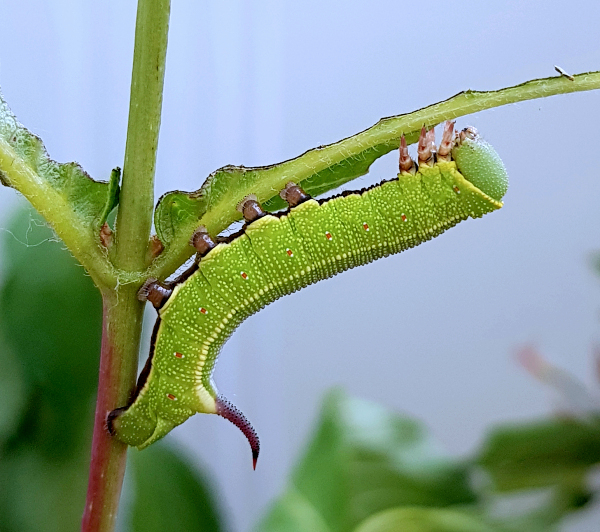
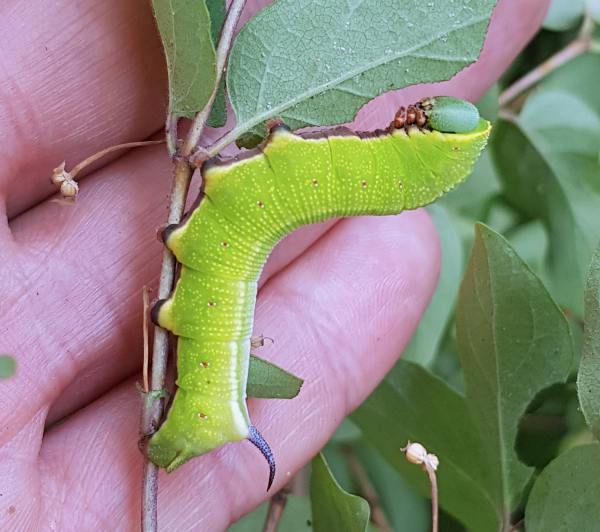
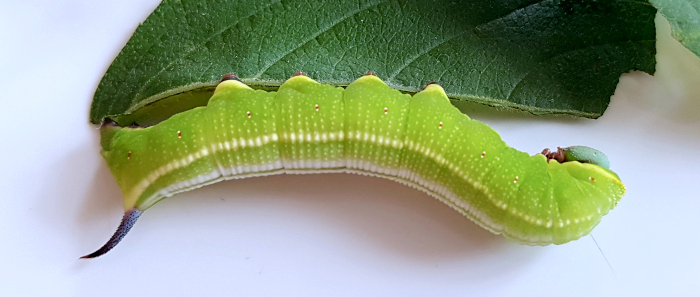
PUPA: Length 35-39 mm, width 10-10.5 mm. Body oblong, tapered at either end, with two very small, almost invisible, sharp head tubercles: mainly dark brown, almost black. Cuticle between abdominal segments lighter, chestnut-colored. Surface of the head, thorax, and cases of wings, legs, antennae, and proboscis finely rugose, opaque. Surface of abdominal segments with deep and frequent punctuation, segments 5-10 quite glossy. Proboscis-case well developed, longer than the legs, reaching to the apex of the wing cases. Cremaster large, wide, and triangular dorsoventrally, and narrow, slightly curved, laterally. Surface of cremaster roughly rugose, covered with sparse short curved hooks. Cremaster with thick bifurcated hook at the end and carinae on sides (Koshkin & Yevdoshenko, 2019).
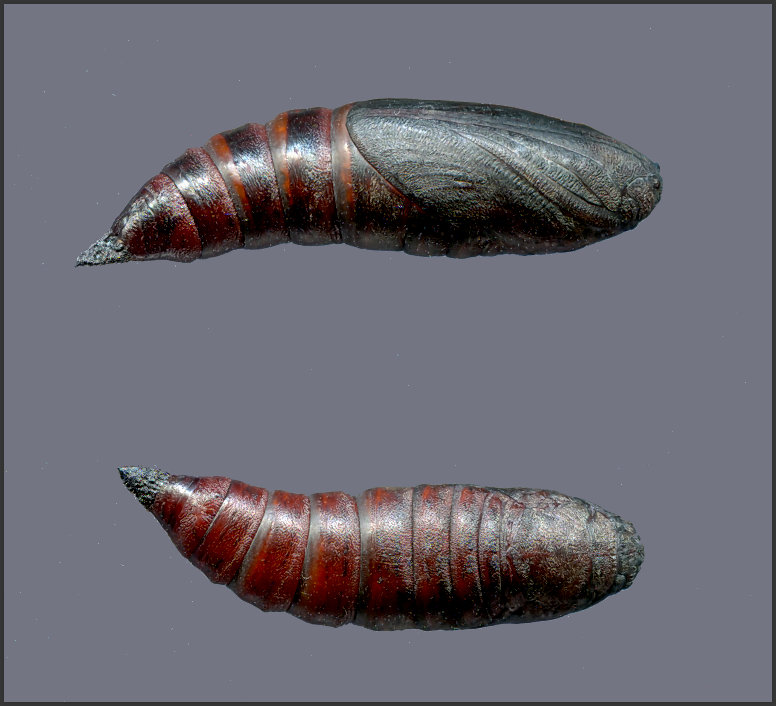
Larval hostplants. Recorded by Chistyakov & Beljaev (1984) from Lonicera japonica; however, this appears to be a secondary reference back to Chu & Wang (1980), which itself appears to be a quote from another source. Serge Yevdoshenko (pers. comm. 2018) and Koshkin & Yevdoshenko (2019) have confirmed that Lonicera is not the host for this species in the Russian Far East, having only found and reared it on Weigela praecox (Lemoine) Bailey [syn. Diervilla praecox Lemoine] and Viburnum burejaeticum Regel & Herd. The distribution of H. ottonis almost completely coincides with that of W. praecox in Russia (Nedoluzhko, 1987).
In captivity, larvae will accept Lonicera as a host plant. However, the growth rate is almost 1.5 times slower than that on Weigela (Koshkin & Yevdoshenko, 2019).
Reported from Rhamnus yoshinoi in South Korea; however, this host is so unusual that it requires confirmation.
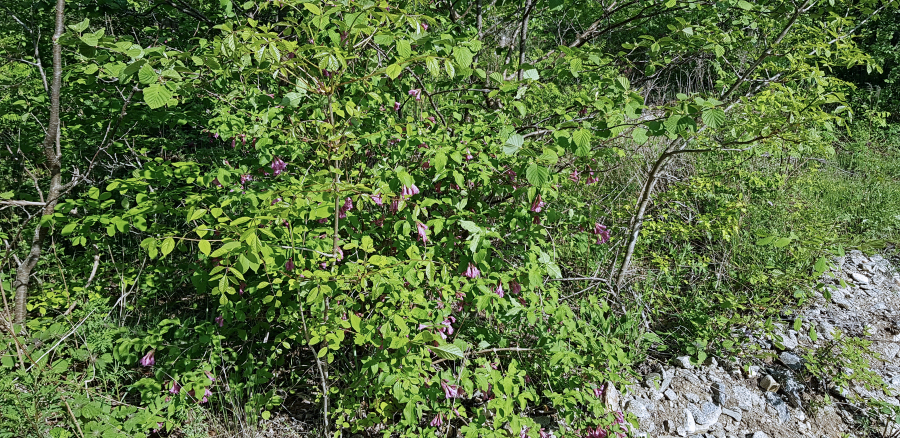
China: Jilin (Jiaohe, Lafa Shan); Liaoning (Jiguanshan; Changhai, Dachangshan Island); Hebei (Ganyugou Scenic Spot); Beijing (Mentougou, 1700m; Baihua Mountain National Nature Reserve); Shanxi (Taiyue Shan, 2000m).
North Korea: North Hamgyong Province (Chongjin).
South Korea: Kyonggi Province (Gwangleung; Suwon; Cheonma-san; Myungji-san; Hwaak-san); Kangwon Province (Chiak-san); South Cholla Province (Wolsul-san).
Russia: ?Khabarovskiy Krai; Primorskiy Krai (Narva; Ussuriysk Nature Reserve; Siniy Mts.; Primorskiy; Khasan; Gamov Peninsula, Andreevka; Knight Bay, Khasan District; 20 km N Chernyshevka, Anuchino District; Vladivostok area).
Confined to the Russian Far East, northeastern China and the Korean Peninsula.
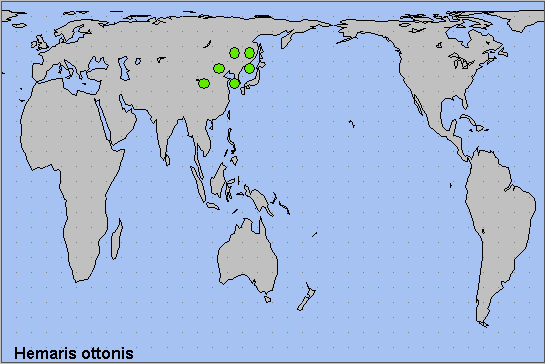
Holarctic; Palaearctic (eastern). Pleistocene refuge: Monocentric -- Manchurian refuge.
 Return to Sphingidae of the Eastern Palaearctic species list
Return to Sphingidae of the Eastern Palaearctic species list